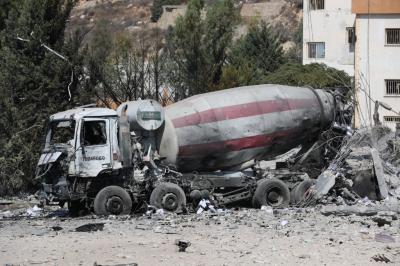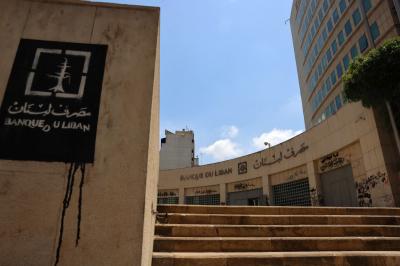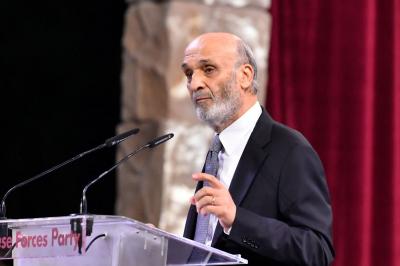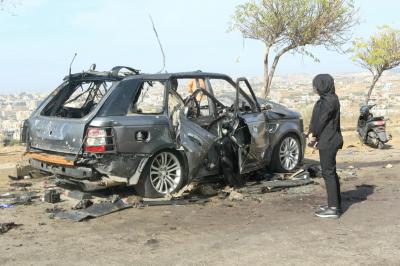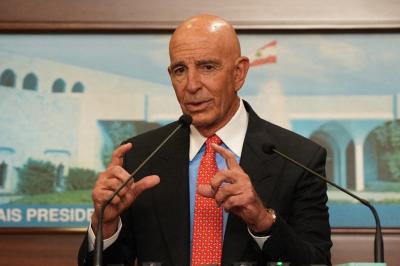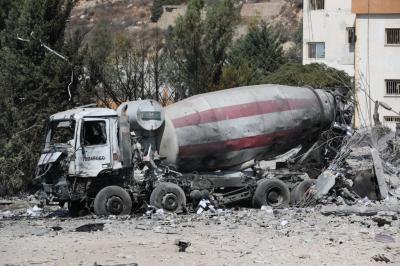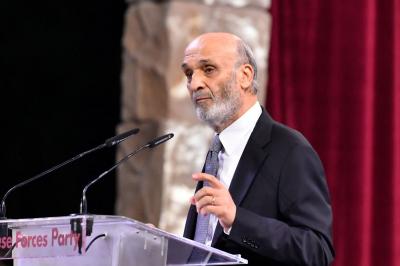Is it necessary to remind everyone that we are on the eve of the "golden jubilee" of the outbreak of the Lebanese Civil War in 1975? Just a few days separate us from this anniversary, marking the spark that ignited a fifteen-year conflict, the repercussions of which are still felt today.
This war did not erupt due to a struggle for power among the Lebanese, nor because of sectarian or social divisions, although these issues were legitimately raised. Its true trigger was the question of the resettlement of Palestinians in Lebanon. And today, that specter seems to be resurfacing in light of the developments stemming from the war in Gaza and its ramifications for Lebanon.
It all began with the 1967 war, which resulted in an Arab defeat known as the "Naksa." The conflict then took a different turn with the rise of Palestinian fedayeen operations, particularly in Lebanon, and an increase in diplomatic initiatives aimed at resolving the Arab-Israeli conflict. It was during this period that Henry Kissinger, National Security Advisor under Richard Nixon in 1969, introduced the theory of the "people in excess" in the Middle East.
Kissinger viewed Israel as being surrounded by four neighboring countries—Egypt, Jordan, Syria, and Lebanon—and noted that two populations coexisted in Palestine: Israelis and Palestinians. Six peoples in five countries, which, according to him, meant that one people was "in excess." Jordan was deemed the weakest link and was thus designated as the alternative homeland for the Palestinians. This plan led to the bloody events of Black September in 1970, which ended in 1971 with the elimination of this alternative by King Hussein, forcing the exile of Yasser Arafat (then leader of Fatah and the Palestine Liberation Organization) and many Palestinian leaders to Lebanon.
Although the theory of "surplus people" faded somewhat, the issue of resettlement remained. After becoming Secretary of State, Kissinger embarked on a regional tour in 1973, but he was prevented from landing at Beirut Airport due to the presence of armed Palestinian factions near the capital. His plane was diverted to Riyaq Air Base. From this, he concluded that a country whose capital could not host a foreign visitor was unfit to remain sovereign—and could, therefore, become the Palestinians' new homeland.
This idea appealed to some Palestinian leaders who, thanks to the Cairo Agreement of 1969, had established a state within a state, not only in southern Lebanon—known as Fatahland—but throughout the country. It was in this context that the Ain al-Rummaneh bus attack occurred on April 13, 1975, marking the start of the Lebanese Civil War. A war in which Palestinian factions became deeply involved, while many continued to refer to it as an "internal conflict."
Behind the scenes, secret negotiations are said to have taken place. Reports suggest that Dean Brown, Kissinger's special envoy, proposed a plan to President Sleiman Frangieh for relocating Lebanese Christians to the United States, with transport ships already prepared. Frangieh rejected the offer, but the conflict escalated nonetheless.
The Syrian intervention in Lebanon in 1976 added another dimension to the conflict. Sensing a rapprochement between Egyptian President Anwar Sadat and Israel following the Geneva Conference of 1975, Damascus sought to consolidate its influence by bringing both the PLO and Lebanon under its control. This ultimately paved the way for Sadat’s visit to Israel in 1977 and the signing of the Camp David Accords.
In response to the "resistance and confrontation" axis formed by Syria, the PLO, and other Arab regimes, Israel sought to exploit the Lebanese chaos, leading to the 1982 invasion under Operation Peace for Galilee. This conflict weakened the PLO, forced its exile to Tunis, and resulted in the May 17, 1983 agreement between Lebanon and Israel, which was swiftly annulled in 1984 under Syrian pressure.
Lebanon believed it had turned the page on forced resettlement. But history proved otherwise: the return of Yasser Arafat to Tripoli (northern Lebanon), the war of the camps between "Amal" and Palestinian factions, and the weakening of Lebanese authority under President Amine Gemayel kept the issue of resettlement unresolved.
With the Taif Agreement in 1989, the war officially ended in 1990. The agreement’s preamble explicitly rejected any form of resettlement, partition, or division of Lebanon. However, during the Madrid Peace Conference in 1991, the issue resurfaced, particularly concerning the inability of Palestinian territories to absorb refugees. This led to initiatives such as a proposal to relocate 6,000 Palestinian families to Iqlim al-Kharroub (Mount Lebanon) under the pretext of providing them with livelihoods.
The specter of resettlement haunted every subsequent crisis: Israel’s wars against Lebanon in 1993 and 1996, the Israeli withdrawal in 2000, the 2006 war, and more recently, the conflicts in Gaza and southern Lebanon. Today, with the two-state solution seemingly doomed, speculation is rife about the forced relocation of Palestinians to Jordan and Egypt, while Lebanon faces growing pressure to regularize the status of both Palestinian refugees and Syrian displaced persons on its soil.
International organizations and certain countries have allocated substantial funds to this cause, raising concerns that resettlement could be normalized under the guise of social and economic integration. Former Lebanese President Michel Aoun twice voiced his rejection of this proposal at the United Nations. Yet, in light of recent regional developments, the topic may resurface.
Indeed, the new Lebanese administration enjoys Arab and international support and seeks to stabilize the country, restore trust, and build a functioning state. However, Israel, with its unwavering political, military, and financial backing from the United States, continues its expansionist ambitions. The Middle East is once again being redrawnbefore our eyes.
Back to square one? Will what the Lebanese rejected on April 13, 1975, now be imposed upon them? Let’s hope not.
Please post your comments on:
[email protected]
 Politics
Politics
